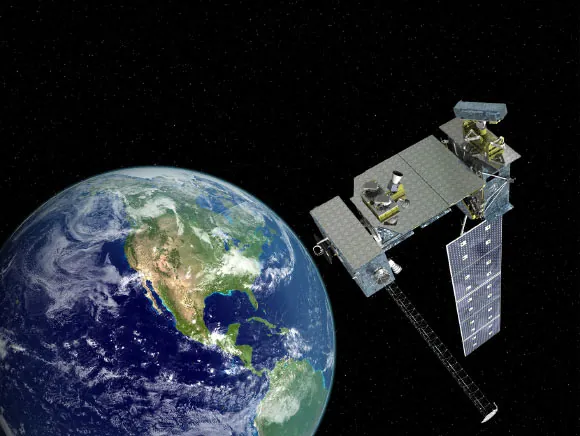
Unveiling the Shocking Truth: How Electrons Spark Dangerous Discharges in Space
2025-09-01
Author: Mei
Researchers Uncover Crucial Link Between Electrons and Spacecraft Damage
In a groundbreaking study using data from the U.S. Department of Defense’s Space Test Program Satellite 6 (STP-Sat6), scientists have discovered a startling connection between electrical discharges on spacecraft and the presence of electrons in their environment. This revelation promises to reshape how we protect our valuable equipment soaring in the cosmos.
What are Spacecraft Environment Discharges?
Spacecraft Environment Discharges (SEDs) are sudden electrical breakdowns that can wreak havoc on delicate onboard electronics and communication systems. While researchers have acknowledged the existence of SEDs for years, the intricate relationship between these discharges and surrounding electron activity remained a mystery.
The Science Behind the Shocks
"To solve this puzzle, we needed data from two distinct sensors on a single spacecraft: one measuring electron activity and another monitoring radio frequency signals," explained Dr. Amitabh Nag from Los Alamos National Laboratory. These discharges often arise from electrons accumulating on spacecraft surfaces, creating a condition similar to static electricity.
Just like the shock you get from touching a doorknob after walking on a carpet, spacecraft can build up energy that, once reaching a critical voltage, discharges explosively.
Diving into Data for Answers
Thanks to STP-Sat6’s dual sensors, researchers were able to closely examine both radio signals and electron activities. Analyzing over a year’s worth of data, they identified over 270 instances of high-rate SEDs, alongside a few hundred episodes of intense electron activity. Surprisingly, in about 75% of the occurrences, bursts of electron activity preceded SED events by a window of 24 to 45 minutes.
Key Implications for Future Missions
This notable delay implies that the accumulation of low-energy electrons is crucial in preparing spacecraft for electrostatic discharges. Dr. Nag observed that as electron activity surged, especially in the range of 7.9 to 12.2 keV, spacecraft began to gather charge until an inevitable tipping point triggered the SEDs. "This lead time opens the door for developing forecasting tools to better mitigate risks associated with these discharges," he noted. Future missions could incorporate real-time monitoring of low-energy electrons, potentially allowing for proactive responses to electrical surges before they disrupt mission operations.
Proven Insights on Protecting Spacecraft
The findings, published in Advances in Space Research, signal a new dawn in space safety protocols, as scientists work toward shielding critical satellite technology from the dangers of the enigmatic space environment.




 Brasil (PT)
Brasil (PT)
 Canada (EN)
Canada (EN)
 Chile (ES)
Chile (ES)
 Česko (CS)
Česko (CS)
 대한민국 (KO)
대한민국 (KO)
 España (ES)
España (ES)
 France (FR)
France (FR)
 Hong Kong (EN)
Hong Kong (EN)
 Italia (IT)
Italia (IT)
 日本 (JA)
日本 (JA)
 Magyarország (HU)
Magyarország (HU)
 Norge (NO)
Norge (NO)
 Polska (PL)
Polska (PL)
 Schweiz (DE)
Schweiz (DE)
 Singapore (EN)
Singapore (EN)
 Sverige (SV)
Sverige (SV)
 Suomi (FI)
Suomi (FI)
 Türkiye (TR)
Türkiye (TR)
 الإمارات العربية المتحدة (AR)
الإمارات العربية المتحدة (AR)